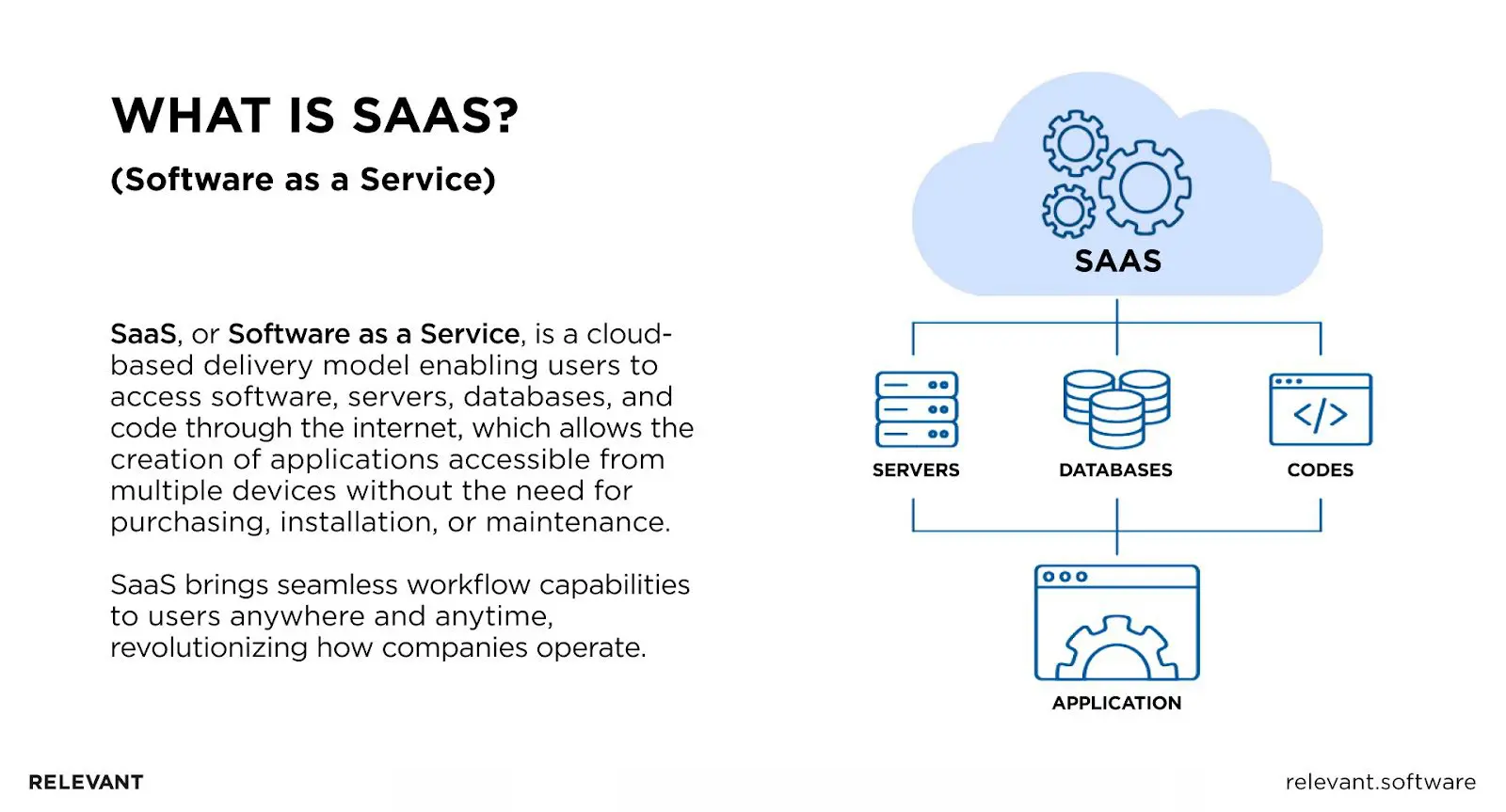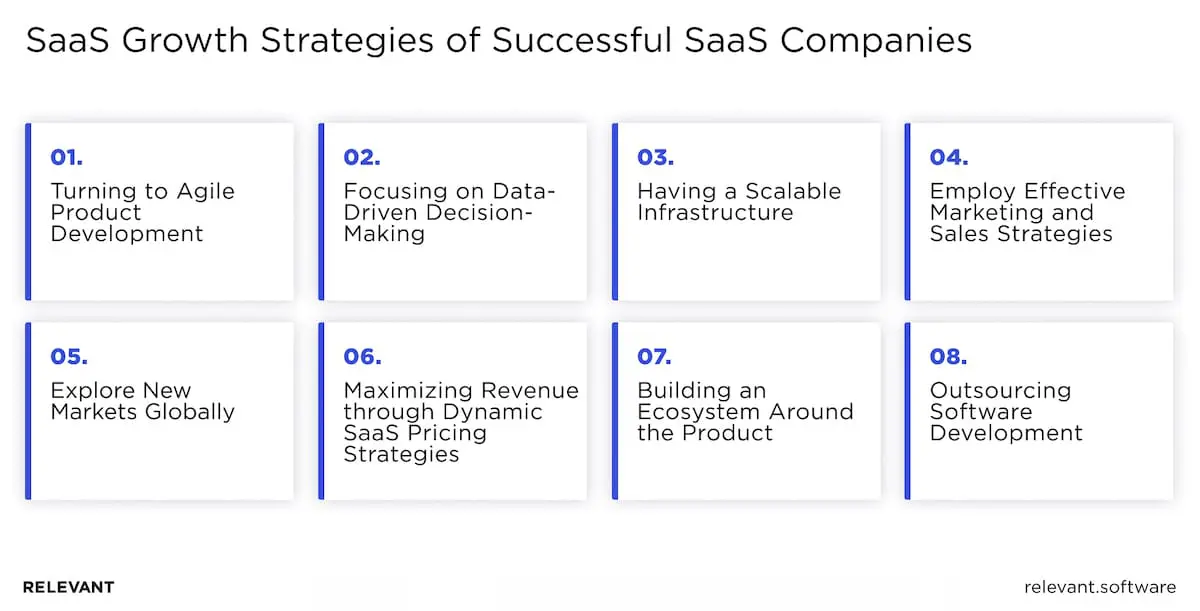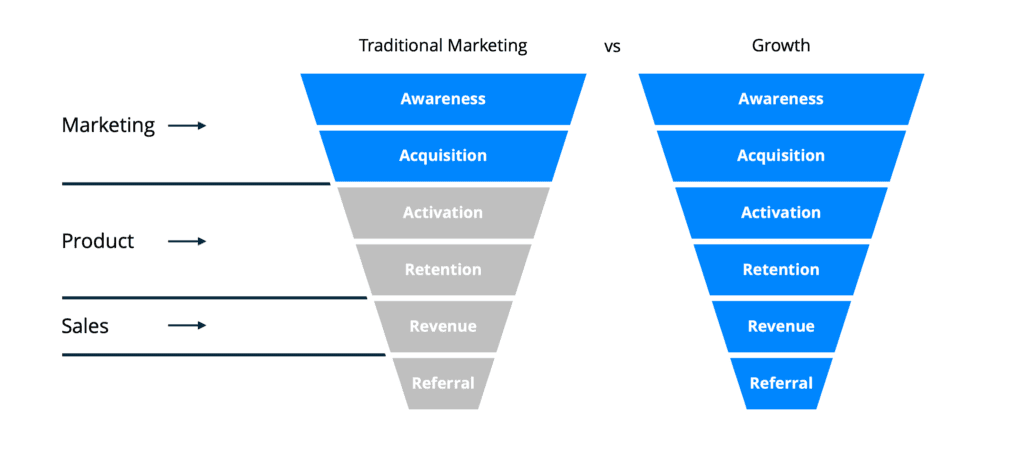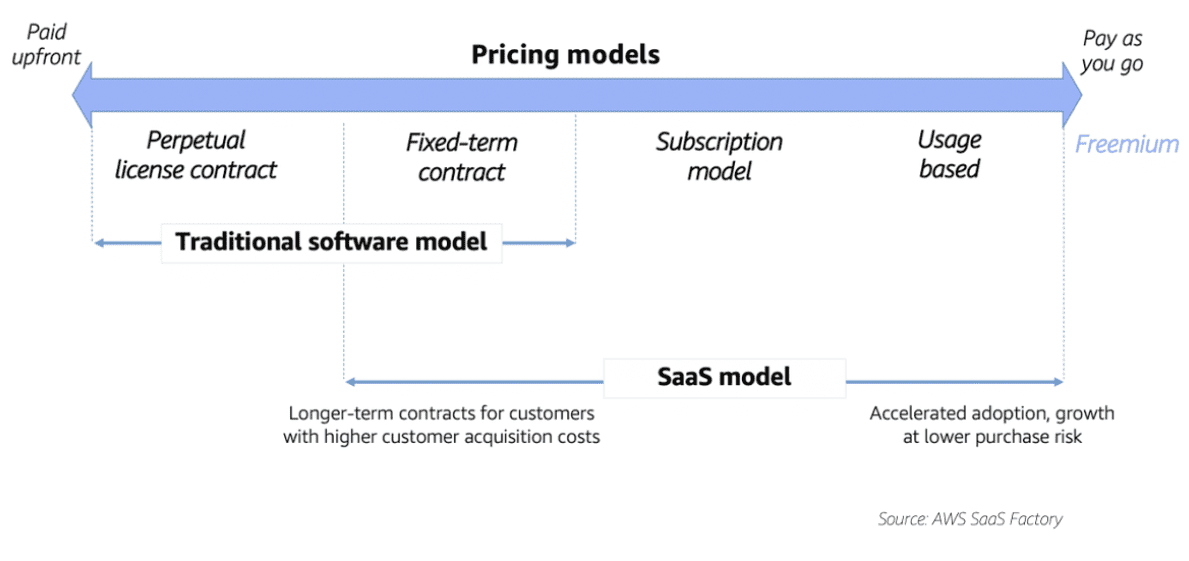The Winning Formula: Discovering the Key Strategies of High-Growth SaaS Companies

SaaS has emerged as a dynamic force in the software industry, significantly impacting the business landscape. Statista’s research has revealed that the SaaS market is experiencing an impressive annual growth rate of 9.80%. Consequently, the market volume will increase from $390.50 billion in 2025 to $793.10 billion by 2029. Thriving in this industry relies on many factors; no standard formula guarantees success for all. But proven SaaS growth strategies, combined with expert SaaS development services, can deliver the same remarkable results that they did for established tech giants.
Our article can give you more insights into high-growth SaaS companies’ secrets. By grasping the intricacies of this ever-evolving game and applying innovative ideas to your business, you can succeed in the SaaS landscape.
What is a SaaS company?
A SaaS company provides software solutions via a subscription-based model, allowing customers to access software over the Internet instead of installing it on individual devices. SaaS companies develop, host, and maintain software on their servers, making it accessible through web browsers or dedicated apps. This model enables users to work from anywhere, simplifies software deployment, and is cost-effective due to its pay-for-use structure. Additionally, SaaS allows for easy customization to meet the specific needs of various industries or customers.

8 SaaS growth strategies of successful SaaS companies
To maintain realistic growth forecasts, companies must prioritize growth from existing customers through retention, cross-selling, and upselling. Balancing these demands is crucial for success, and the “Rule of 40” has become a popular metric for measuring operating performance. Those achieving growth rates of 40% and higher are likely to become multibillion-dollar businesses.
While SaaS is often associated with rapid growth, few companies in this sector are able to maintain growth rates of over 30 to 40 percent. A study conducted on 100 publicly traded SaaS firms in the United States with revenues over $100 million in July 2024 revealed that the median revenue growth rate rebounded to 70% year-over-year, up from a low of 55% in 2023.
So, what measures can SaaS businesses take to avoid being consigned to the startup graveyard? Our guide outlines seven key SaaS growth strategies, analyzed from successful examples of SaaS companies, to help propel your business toward sustained hypergrowth.

Turning to agile product development
In SaaS, there is no concept of delivering a “final product.” The priority is on flexibility, rapid innovation, and quickly providing value, which requires releasing the minimum viable product (MVP) and iterating based on customer feedback and market changes. A well-crafted SaaS business strategy centers around important use cases, and providing effective solutions is critical. Shortening development cycles and releasing updates frequently while keeping customers’ needs in mind is key to staying ahead of the competition. SaaS product design best practices help you ensure that the user experience remains seamless and intuitive, even as the product evolves.
By adopting agile product development practices, SaaS companies can:
- Swiftly adapt to shifting customer needs and market demands
- Launch new features and updates more often, fostering faster innovation
- Collect customer feedback early and frequently, resulting in superior products and heightened customer satisfaction
- Enhance collaboration and transparency across teams, streamlining development processes
- Minimize waste and inefficiency by delivering a product that customers truly need and value.
Example:
An example is Slack, a team communication tool. Slack’s development team used Agile methodology to create an intuitive, user-friendly tool that adapts to users’ needs. Through continuous development, they integrated feedback and introduced new features. This compassionate, human-centered SaaS strategy led Slack from a small startup to a thriving company valued at over $23 billion, impacting millions of users worldwide.
Focusing on data-driven decision-making
A profound understanding of your subscription analytics unveils historical patterns and helps predict future trends. In the ever-changing SaaS landscape, staying in sync with the latest trends and fine-tuning your SaaS growth strategies is essential.
Navigating vast amounts of data can be daunting and time-consuming. A single source of truth, offering a 360° view of your subscription analytics, is vital in this scenario. You can make informed decisions that propel growth by harmonizing various marketing, sales, and finance functions.
Subscription analytics offer valuable insights, such as:
- Identifying revenue optimization opportunities
- Forecasting and mitigating churn
- Monitoring customer segments and their revenue impact
- Assessing trial management performance
- Evaluating pricing strategy outcomes
Example:
Adobe leverages data to enhance customer experiences across all touchpoints, tracking engagement, conversion rates, and lifetime value. They use data-driven insights to inform decisions on product development, pricing, and marketing strategies.
Additionally, Adobe employs machine learning algorithms to analyze customer data and personalize offerings, resulting in higher satisfaction and retention rates. This data-driven approach enables Adobe to remain competitive in the SaaS market and innovate, meeting evolving customer needs
Having a scalable infrastructure
Scalability is crucial for SaaS companies to handle growing user demands while maintaining performance. This involves designing and implementing a flexible infrastructure that can effortlessly handle traffic spikes and user activity fluctuations.
One popular SaaS strategy for scaling up is to leverage the power of cloud computing services like Amazon Web Services (AWS) or Microsoft Azure. These platforms provide seamless scalability on demand and flexible pay-as-you-go pricing. So, SaaS companies can quickly provision additional servers or resources to handle spikes in traffic or user activity and scale back down when demand decreases. It can help reduce infrastructure costs and improve operational efficiency.
Another B2B SaaS growth strategy for scalable infrastructure is to use containerization technology such as Docker and Kubernetes. Containers enable applications to be deployed and scaled quickly and efficiently, allowing SaaS companies to respond rapidly to changing user demands.
Example:
Netflix is a SaaS company that successfully implemented a scalable infrastructure using cloud computing and containerization technologies to deliver high-quality video content to millions of users worldwide. They adopted an AWS microservices architecture for content storage and streaming and employed chaos engineering and fault tolerance techniques to ensure high availability and reliability. These efforts have allowed Netflix to provide a seamless streaming experience and become a leading SaaS company.
Employ effective marketing and sales strategies
Broadening marketing channels is vital for SaaS growth, even if current ones perform well. SaaS businesses often overlook the potential of SEO and content marketing, projected to be essential growth drivers in 2025. A successful B2B SaaS growth marketing strategy involves multiple tactics to ensure sustained expansion. Here is an example of the SaaS marketing plan for high-growth companies:
- Implement lifecycle marketing to cater to each customer journey stage, including Awareness, Conversion, Purchase, Activation, Renewal, and Referral.
- Consider affiliate marketing through industry influencers and leaders if your product lacks a viral coefficient.
- Personalize the in-app user experience by collecting data and utilizing data-driven product marketing.
- Improving self-serve customer support can drive growth for your product.
- Use BOFU content to showcase how your product stands out from the competition.
- Host informative webinars that relate to your product and promote it effectively.
- Utilize viral loops to gain exponential growth through word-of-mouth.
Example:
Dropbox is a prime example of effective SaaS marketing, mainly through referral programs. Offering additional storage space to users who referred their friends led to a 60% increase in sign-ups, benefiting both the company and users. Dropbox also invested in content marketing, creating engaging blog posts and videos to establish itself as a thought leader in the cloud storage space, attracting even more customers.

Explore new markets globally
SaaS products are tailor-made for the global market. Leveraging cloud consulting services allows businesses to optimize their SaaS operations for global reach and expansion to new markets. On top of that, due to cloud technology, users can access your product virtually anywhere in the world. Restricting your SaaS operations to one country can limit your growth potential and put a cap on your success.
In fact, according to Stripe, 89% of unicorns expanded internationally before reaching their billion-dollar valuations. For a SaaS business eyeing an IPO, a diversified revenue stream spanning domestic and international markets indicates stability and long-term success.
Of course, expanding your business overseas presents challenges, such as navigating EU-specific compliance requirements, local taxes, and differing regulations from region to region. However, research indicates that a whopping 30% of global SaaS revenue comes from European markets alone, making the hurdles worth the effort for businesses aiming for an IPO.
To crack international expansion successfully, SaaS businesses need to be prepared for the following:
- Multiple currencies
- International payments via global payment gateways
- Legal, regulatory, and tax compliance
- Language and pricing localization
As the global SaaS market is set to cross $883.34 billion by 2029, you’re missing out on a growth opportunity if you are not preparing for international expansion.
Example:
In 2020, the SaaS company Zoom saw explosive growth due to the global pandemic and the increased demand for remote communication tools. Zoom expanded into new international markets, such as India and Singapore, to reach more potential customers to continue its growth trajectory.
Maximizing revenue and reducing churn through dynamic SaaS pricing strategies
Maximizing revenue is critical for SaaS businesses on the hyper-growth track, and pricing is a key growth lever that can help achieve this goal while delivering value to customers. To find the right pricing strategy, businesses must experiment and iterate quickly, comparing plans, creating new tiers, and switching models. However, sudden pricing changes must not cause customer churn, and pricing experiments can significantly impact long-term revenue growth.
Designing scalable revenue expansion paths is also essential for extending customer lifetime value and achieving hypergrowth. Expansion revenue typically comes from upsells, cross-sells, add-ons, and reactivation, and focusing on expanding revenue with existing customers is critical for growth.
Reducing churn is another SaaS strategy for optimizing revenue from existing customers and staying on the hyper-growth track. Involuntary and voluntary churn can impact revenue, but addressing involuntary churn is typically easier. Strategies to reduce involuntary churn include payment reminder emails, a smart dunning strategy, and predicting churn with analytics.
Overall, continually optimizing pricing and reducing churn is crucial to achieving hypergrowth in the SaaS industry and maximizing revenue. By embracing experimentation and iteration, businesses can shift their growth trajectory upward dramatically within months.
Example:
Zendesk adjusted pricing based on specific market segments as it grew and diversified its product offerings. They optimized pricing by focusing on perceived value and adapting it to different stages of growth. For instance, in 2011, they introduced enterprise pricing to cater to evolving customer needs. Zendesk’s agility in experimenting with multi-tiered pricing and new product launches contributed to its impressive growth, which has led to over $1 billion in annual recurring revenue (ARR) today.

Building an ecosystem around the product
Building a professional network independently can be intimidating and challenging. Crafting cold outreach messages and seeking connections can sometimes feel disheartening. Still, creating a professional community provides a nurturing environment that fosters guidance and feedback. This approach not only enriches the lives of your target audience but also gently nurtures your business’s brand awareness, fostering a thriving community and an ever-expanding circle of connection.
Additionally, developing a comprehensive partner ecosystem can accelerate revenue growth for your business. B2B SaaS companies with a channel partner program generate over 20% of their revenue through the channel, making it a powerful sales accelerator. A well-planned alliances and channel B2B SaaS sales strategy that includes technology partners, system integrators, resellers, influencers, and advocates can act as a growth flywheel.
Example:
HubSpot is a SaaS company that has built a thriving community around its suite of marketing, sales, and customer service software products. The HubSpot Community allows users to connect, share best practices, and ask for advice while promoting using HubSpot’s products. Members gain access to exclusive content, training, and events. This SaaS growth strategy has established HubSpot as a thought leader in the industry and fostered a loyal customer base that advocates for its products.
Outsourcing software development
Outsourcing software development is still one of the go-to strategies for SaaS companies aiming to accelerate growth and stay competitive. Building everything in-house isn’t always practical. Instead of stretching their internal teams thin, companies can focus on their core competencies while leveraging external expertise to build, enhance, or scale their SaaS products and services.
Honestly, finding, hiring, and retaining top-tier developers with the necessary experience locally is time-consuming and expensive. Add the growing demand for niche skills, and it’s no wonder IT outsourcing services are thriving. In this regard, outsourcing is a viable SaaS strategy that allows companies to accelerate time-to-market and build top-notch solutions by accessing specialized expertise.
Example:
GitLab is one of the top players in DevOps lifecycle tools, but they didn’t get there by doing it all alone. From the very beginning, GitLab leaned on the open-source community and outsourced parts of their software development to experts from around the world.
And it worked. GitLab went public in 2021 with a valuation of over $11 billion, and now they’ve got more than 30 million registered users and 100,000 paying customers under their belt. Companies like Goldman Sachs and Nvidia trust GitLab, and it’s easy to see why. By outsourcing strategically, they built a platform that evolves at the speed of developers’ needs and stays ahead of the curve.
Top 7 fastest growing SaaS companies in 2025
The phenomenal growth of SaaS in the past decade is no surprise, with the market size currently estimated at around $272.5B. The alluring business model, along with the simplicity and adaptability it offers end-users, has contributed to the continued prevalence of “software eating the world.” Our list of successful SaaS startups and companies showcases rapid growth and caters to diverse industries and functions.
Canva
Canva, a web-based SaaS platform, embraces users of all skill levels, empowering them to craft visually stunning designs and publications effortlessly. Evolving from its free roots, Canva now thoughtfully caters to its users’ diverse needs by offering various licensing options, including enterprise, education, and pro-individual licenses.
- Established in: 2012
- Headquartered in: Sydney, Australia
- Financial backing: $572.6M (Series Undisclosed)
- 5-year search growth: 1011%
- Status of search growth: Skyrocketing
Notion
It is a SaaS productivity platform designed to help organizations tailor their processes and workflows to their unique needs. With Notion, teams can create and collaborate on product roadmaps, organize meeting notes, store documents, and more. The company boasts an impressive $10B valuation, over 20 million users, and has achieved remarkable viral success within the B2B SaaS market.
- Established in: 2013
- Headquartered in: San Francisco, California
- Financial backing: $343.2M (Series C)
- 5-year search growth: 1720%
- Search growth status: Soaring
Loom
This SaaS tool gained traction during the COVID lockdown, enabling users to record their screens and share videos easily. The platform offers custom workspaces and libraries to organize videos. Businesses have embraced Loom to reduce the number of meetings, boosting productivity. Boasting over 14 million users across 200,000 companies, Loom has established itself as a reliable and user-friendly solution.
- Established in: 2016
- Headquartered in: San Francisco, CA
- Financial backing: $203.6M (Series C)
- 5-year search growth: +47%
- Search growth status: Consistent
Airtable
This cloud-based software company revolutionizes how users create and share relational databases. Combining the best of spreadsheets and databases, Airtable assists users with project management, task tracking, and marketing automation. The platform allows for the creation of multiple workspaces and boards, as well as seamless data import from other software and tools.
- Established in: 2013
- Headquartered in: San Francisco, CA
- Financial backing: $1.4B (Secondary Market)
- 5-year search growth: 143%
- Search growth status: Surging
Linktree
Linktree has transformed how brands and individuals showcase their most important content across multiple social networks by providing a centralized platform for easy access. Users can create actionable links for services like Instagram that don’t permit direct linking from posts. While other “link-in-bio” tools exist, Linktree claims to be the pioneer in the SaaS space. Since its inception in 2016, the company has raised over $50M and currently serves over 12 million users.
- Established in: 2016
- Headquartered in: Melbourne, Australia
- Financial backing: $165.7M (Series C)
- 5-year search growth: +2300%
- Search growth status: Soaring
Databricks
In an era where business data is often scattered and hard to access, Databricks has emerged as a game changer. Their innovative Databricks Lakehouse unifies data within organizations by merging the best aspects of data lakes and data warehouses. Companies can unlock insights and make more informed decisions by integrating data, analytics, and AI.
- Established in: 2013
- Headquartered in: San Francisco, California
- Financial backing: $3.5B (Series H)
- 5-year search growth: +877%
- Search growth status: Skyrocketing
PartnerStack
PartnerStack is an innovative partner relationship management platform designed to help businesses recruit, manage, and grow their affiliate, referral, and reseller partnerships. The platform streamlines the entire partnership lifecycle, from onboarding to payouts, and allows users to create custom tiers to motivate partners at various earning levels. According to PartnerStack’s website, partnerships on the platform have generated more than $180M in revenue over the past year, showcasing its potential for driving growth.
- Established in: 2015
- Headquartered in: Toronto, Canada
- Financial backing: $36.2M (Series B)
- 5-year search growth: +3700%
- Search growth status: Steady
Our SaaS development expertise
Utilizing our expansive technical prowess and deep domain expertise, the professionals at Relevant build secure, fast-loading, and effortlessly scalable SaaS solutions that seamlessly integrate with third-party services. We succeed in every project by employing top industry standards and effective DevOps practices.
Game-changing SaaS-based documentation tool for Scriversi
Our team collaborated with Scriversi, a SaaS company based in the United States, to create a cloud-based documentation tool to provide an automated and secure content management solution. Leveraging cutting-edge technologies like Node JS, React, GraphQL, and AWS, we developed a platform to streamline documentation processes for many professionals.
Composed of a multidisciplinary team including developers, designers, QA specialists, project managers, business analysts, solution architects, and DevOps experts, we designed the product from the ground up. Our team implemented various features, such as user and team management, document management, and integrations with Google Sheets, Jira, Freshdesk, and a Chrome plugin.
This collaboration showcases Relevant’s in-depth industry knowledge, technical prowess, and dedication to forging lasting and fruitful relationships with our clients.
Smart SaaS home buying solution
FirstHomeCoach, a UK-based fintech firm, partnered with us to create a SaaS platform that simplifies the complex home buying process. The platform required a custom algorithm and recommendation engine for personalized property-buying plans.
Our challenges included securing user data and creating white-label modules like mortgage calculators and deposit builders. We selected the technology stack, designed the app’s security and architecture, and built the system from scratch, incorporating features like property buying plans, mortgage calculators, deposit builders, and third-party integrations.
By adopting various security measures, we ensured a robust platform that successfully helped over 5,000 users plan property purchases in its first year, processing over 40,000 data points and garnering over 1,000 mobile app users.
Wrapping up
The SaaS market is both prosperous and fiercely competitive, with well-established giants dominating significant portions of the industry. However, this should not deter you from pursuing your goals—support is available. Relevant’s team of developers specializes in nurturing the fastest growing SaaS companies from across the globe.
We are here to guide you through every stage of SaaS development, from ideation to testing and product launch. We can also support your deployment and scaling efforts through our DevOps consulting services to strengthen your infrastructure and streamline operations. Consider Relevant an integral part of your team, working together to realize your company’s full potential. Сontact us; we’re eager to learn about your vision!



